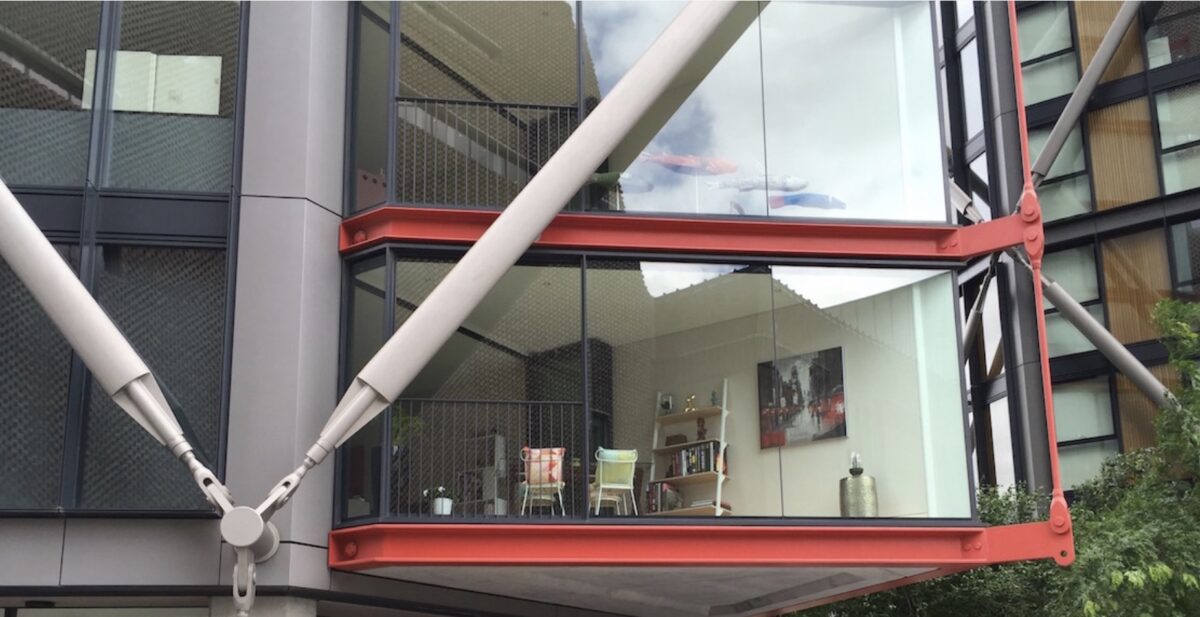Tate Modern has lost their case with residents of the Neo Bankside luxury development after a high court ruling. The lawsuit has dragged on for several years.
Four multimillion-pound luxury flats next to Tate’s viewing platform brought the case to court after the tourist attraction opened, bringing “hundreds of thousands of visitors” who could stare straight into their homes.
The flats designed by Rogers Stirk Harbour + Partners are currently on sale for between £750,000 and £2.5m
In February 2020, the Court of Appeal dismissed their claim, saying they should “lower their solar blinds”. But the Supreme Court overturned the decision following a hearing in December 2021. The five residents slapped an injunction demanding the gallery prevent members of the public from observing their flats by “cordoning off” parts of the platform or by “erecting screening”.
The flats designed by Rogers Stirk Harbour + Partners are currently on sale for between £750,000 and £2.5m, with penthouses costing up to £8m according to Rightmove.
Lord Leggatt, the judge in the case, said “the viewing gallery, which is currently closed, left the residents feeling like they were “being on display in a zoo”. He added it was “not difficult to imagine how oppressive living in such circumstances would feel for any ordinary person”.
The court distinguished the impact of Tate’s viewing deck and a hypothetical block of flats that could have been built on the same site, which would be considered “normal” usage. “In such circumstances the fact that the occupants of these new flats could see straight into the claimants’ living accommodation might have caused the claimants annoyance,” said Lord Leggatt. There were two legal questions raised 1) whether “overlooking” constitutes a private nuisance, and 2) whether the viewing gallery was a reasonable use of the Tate’s land, given that it was in an art gallery.

The court ruled that creating the viewing platform was not a “normal” use of the museum’s land, and therefore there was a right to complain.”Inviting public members to look out from a viewing gallery is manifestly a very particular and exceptional use of land,” the judge said. While the facts of the dispute relate to modern architecture, the law partly dates back to the 14th Century. According to the BBC, The Supreme Court notes that in 1341, John Le Leche, a London fishmonger, unlawfully erected a “watch-tower” from which he could peep on his neighbours. That ancient case shows that peering into someone’s home can cause a legally intolerable nuisance, even in a densely populated city.
As Lord Leggatt explains in this case, the critical question is what is the everyday and regular use of Tate’s land. The judge was clear that in his opinion this was a specific one off case, as the Tate’s decision to open a viewing gallery was “a very particular and exceptional use of land”, and did not mean that residents could complain of nuisance because neighbours could see inside their buildings. He also stated that the properties’ glass walls meant the claimants were “responsible for their own misfortune”
Rogers Stirk Harbour + Partners describes the flats, ‘This residential scheme lies in the heart of the Bankside area of London, located close to the River Thames and directly opposite the west entrance to Tate Modern and its new extension. NEO Bankside comprises 217 residential units in four buildings ranging from 12 to 24 storeys. These four hexagonal pavilions have been arranged to provide residents with generous accommodation, stunning views and maximum daylight. The steel and glass pavilions take their cues from the immediate context.’
The platform opened in 2016. The case will now be returned to the High Court to determine a solution for the flat owners.
Photos © Artlyst 2023

